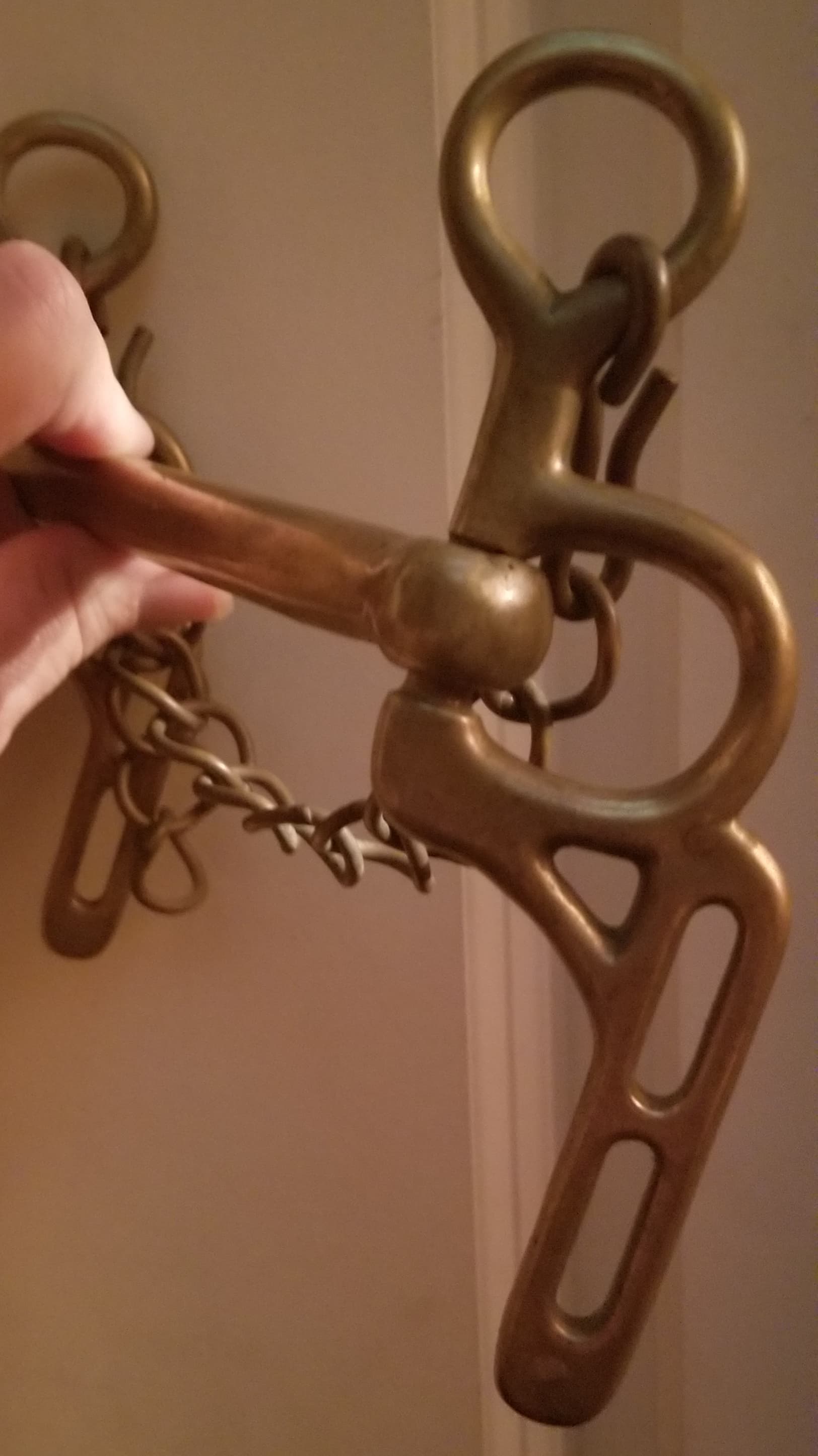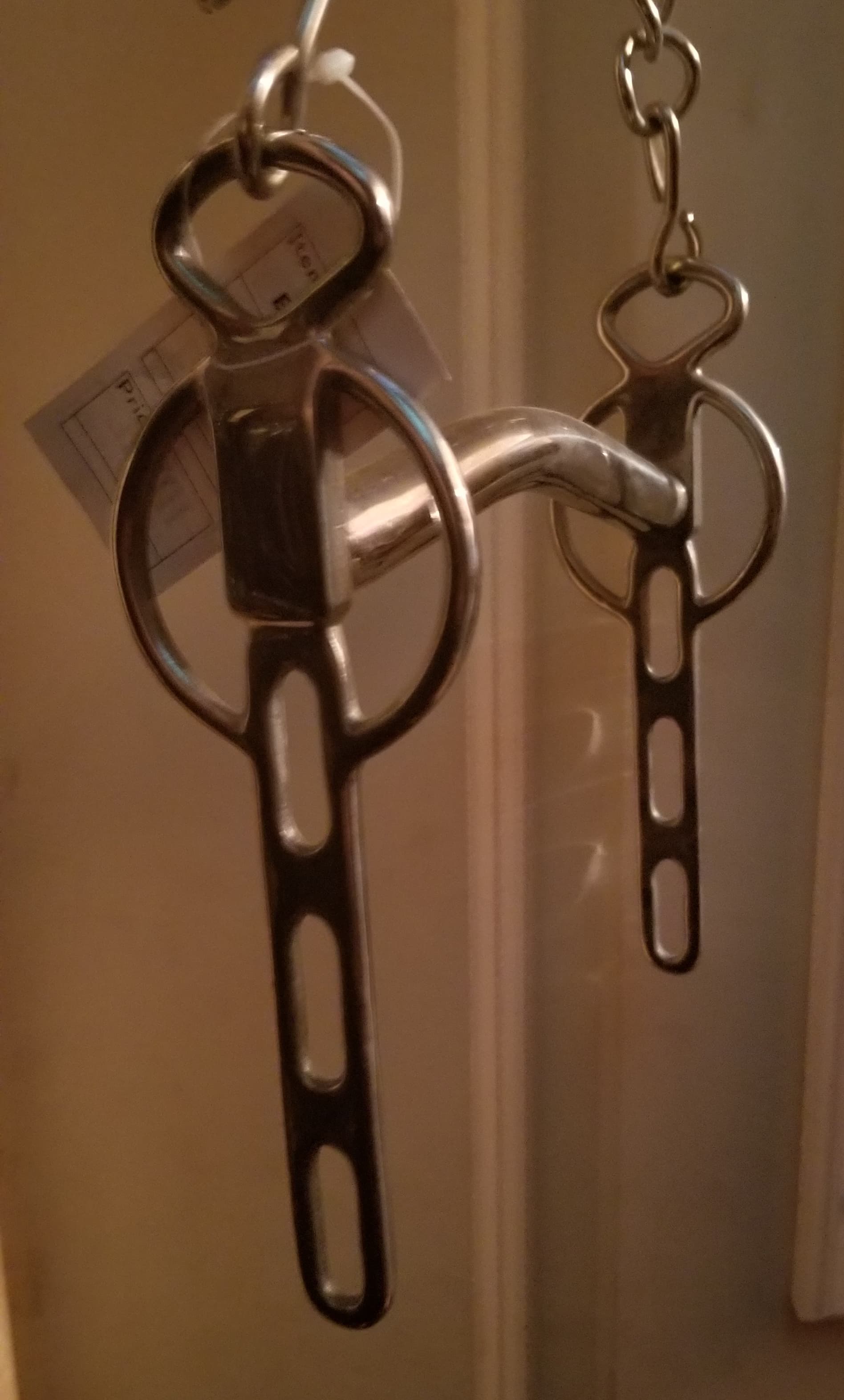To Brake, or not to Break
Whoa, is one of the most important lessons, an equine of any kind, must learn and master. Whoa, is what keeps the rider safe, and secure in the knowledge that no matter what, the horse will stop. Runaways are one of the most terrifying experiences a rider of any level of expertise can experience. Galloping without any semblance of control, is not only dangerous for the rider, but for the horse as well. The potential for a mind and body damaging wreck, the abrupt end to any runaway, is always high. Every horse doesn’t work with a bitless bridle, bosal or simple snaffle. Many require a bit more, some require quite a bit more of a bit, and some even more. It varies depending on the results the choice of bit provide. Using too soft a bit, isn’t doing a horse any favours if the rider or driver must use excessive pressure, to attain the desired result. If the desired result is a reliable whoa, it’s important to use the right bit for the horse. Of course proper training is of the highest importance, yet every horse, like every person, is an unique individual, and should be approached as such.
Horses that already have issues with braking, are among those that would need more bit than less. Horses that are known to runaway under saddle, take a bit of work. Driving horses who have run away, particularly those where the mad gallop ended in the mess and horror of a wreck, are the hardest to retrain to stop. Any whoa they may have had, is generally lost somewhere between those first strides of panic, and wherever the mad dash ends. The slapping of leather, rider or driver possibly screaming or yelling, the noise, the awful, scary noises just add to the terror. As prey animals, it’s ingrained in equines to run until it’s safe to stop. If safe never comes, the animal continues to flee. Bailing off the horse only exasperates the problem. Leaping off a cart or wagon to allow a runaway driving horse to carry on until it crashes, creates an almost impossible problem to fix. These are horses that made decisions on their own, because they either didn’t have the training and experience to fall back on, or a handler they could have faith in.
The big, black Canadian horse that came to me for retraining was the poster boy, of what to do wrong, with a driving horse. He wasn’t just a driving horse though. He was also a riding horse. His owners thought they would like a family driving horse, yet the big black didn’t have enough of a foundation to be more than what he was, a reasonable riding horse. They suffered a bit of a runaway with him, the driver bailed and trouble ensued. He was now a bit unsure of being ridden as well, so came to me, to see what I could do with and for him.
I did what I always do, go back to the beginning and work forward again. Success always depended on how badly traumatized the horse had been. The only way to figure that out was by putting in time. Thankfully, after the initial nervousness, the black gelding settled and was willing to work and learn. After about a week or so, one of his owners began riding sessions with him, and everything was going swimmingly. The horse was relaxed and happy, his rider was pleased, and I was relieved. It certainly appeared that the big fellow would still be a reliable riding horse, which was wonderful. Things were going exceptionally well, until one Saturday morning that is.
Early that fateful morning, his owners unexpectedly showed up with the horse trailer. What was going on, I wanted to know. After all, I’d only had him for two weeks. There were still two to go. I was completely befuddled. As it turned out, they’d decided to take him into a driving clinic. Of course this clinician would be able to sort their horse out. He was very well known, and clearly trumped my knowledge and experience.
“Don’t,” I strongly advised with a heavy feeling of desperation, “don’t do this. It’s way too risky. It’s only been two weeks. He’s finally going well. This isn’t a good idea at all. Please, don’t do this.”
My warnings and advice fell on deaf ears. They were bound and determined to take him, and there wasn’t a darn thing I could do about it.
“At least use this bit,” I retrueved an elbow bit with multiple leverage choices, “you want to be able to stop him, if anything goes wrong. Make sure the lines are attached to the bottom slot. At least then you’ll have a shot at controlling him.”
They agreed or conceded, one or the other, and off they went, leaving me standing there shaking my head and watching them go. I had the worst feeling ever. A sick feeling deep in the pit of my stomach. It didn’t leave all day, at least until they returned later that afternoon.
When I heard that he’d been fine, nothing had happened, I felt nothing but relief. Then they casually informed me that they were taking their horse to the next day of clinic as well. Of course I tried to talk them out of it. Wasn’t it enough, to tempt fate and get away with it once? Couldn’t that be enough? Why push luck and look for trouble? Again, I lost the argument. “At least use my bit again, on the lowest slot for maximum control,” I sighed, when I really wanted to groan, and give them both a good shake. I felt helpless, frustrated and incredibly annoyed. I could tell, nothing I was saying was being taken in, or given any credibility. This clinician had advised they bring him back. They were bringing him back. As they left my yard, that awful knot returned to my belly, and I couldn’t shake it. I wished they’d listened.







Hi! My daughter Kate (19) and I have been following you, and LOVE your stories. We fell behind, and had to reread and fill in a few blanks where we missed an “episode”.😊 We have Aspergers, along with my son(24), and have a love of words, puns, etc… We have gotten stuck where you say “bailing off the horse only exasperates the problem- or a version of that. We think you missed an opportunity to use one of our favorite words- exacerbate! I hope we are not out of line, and are NOT being critical, just sharing something stuck in our heads! (My daughters favorite word to say is “louver”.) Shes a brilliant gal, so loving and kind. She dearly loves and adores her 2 horses, and her foxhound Lucy- all 3 are rescues! She currently is concentrating on drawing Arthurian legend and Star Wars characters. (She’s also been working on a Star Wars book for about 7 years now, since her dad passed away. Hopefully she’ll finish and share it some day.) Thank you for your wonderful stories. We can’t wait to see them published, and hope to have you autograph one for us! BJ Palmer
That’s really funny, because I originally went with exacerbate, but decided that exasperate would be funny. I suppose great minds think alike, almost! lol